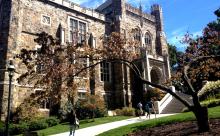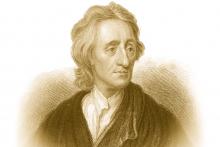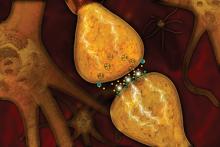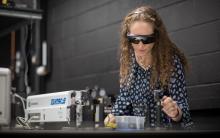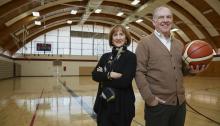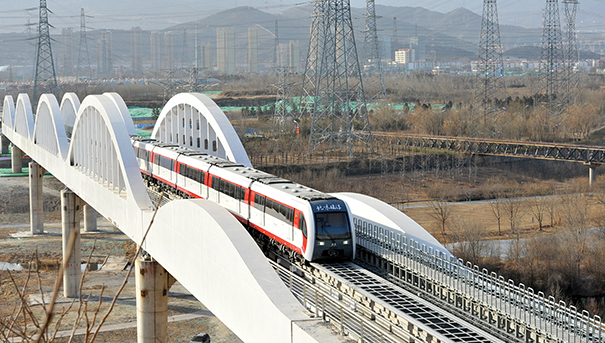
Superconductors, compounds that conduct electricity without resistance below a specific temperature, show great potential in a number of technological applications, such as medical imaging, electrical power, transportation or high-speed computing. Examining ultracold atomic gases to better understand the quantum mechanics processes surrounding superconductivity and magnetism occurring in solids and liquids is the focus of atomic physicist Ariel Sommer.
Sommer, assistant professor of physics, cools atoms to temperatures close to absolute zero and observes what transpires when a large number of particles interact and the resulting states of matter they form. This gas exhibits quantum mechanical phenomena, which can be used to model these structures in an effort to better understand more complex materials.
“The systems I study are like the fruit fly for quantum many-body physics research,” he says. “You have a system, like a superconducting material, that is too complicated to describe in full detail, but you can come up with ways of reducing it. If you can come up with ways of understanding the important parts of the system, and model those parts, you can make predictions of what more complex materials will do.”
In the lab, Sommer uses a laser to trap atoms in a vacuum chamber. He begins with blocks of lithium, an alkali metal that is highly reactive, which he melts inside the chamber. A gas vapor forms, which Sommer cools. He then conducts experiments using these gases and measures the resulting actions as a test bed for quantum many-body problems—what happens when you take particles and let them interact. One laser traps the atoms, while another shines light on it, casting a shadow onto a camera, which takes a snapshot of the action occurring at that moment.
Lithium’s atomic properties make it a good choice for a model, says Sommer.
“Lithium is a nice atom to work with because it has an isotope that is a fermion. Protons, neutrons and electrons are fermions,” says. “When you study the properties of a superconductor, you are looking at what electrons do in a solid. The behavior of fermions is really important to understanding how materials work.”
Sommer’s research involves better understanding the dynamics of superfluids and, in particular, the transport of atomic spin. Atoms have properties of spin, a form of angular momentum carried by elementary particles, composite particles and atomic nuclei. In quantum mechanics, if an object is rotating, it can only have discrete amounts of angular momentum. This leads to discrete energy levels in an atom. Sommer’s lab prepares a mixture of atoms in different internal spin states and studies how the spin is able to flow through the gas—in other words, the motion of spin “up” atoms relative to spin “down” atoms. A better understanding of spin transport will benefit the developing field of spintronics, in which spin is used to carry information rather than electric charge.
In a gas of fermionic atoms at very low temperatures, atoms with different spin interact and form bound states called Cooper pairs that are similar to molecules and lead to the formation of a superfluid. When Cooper pairs are broken, the two atoms that once formed the pair can now move independently and are an example of what physicists call quasiparticles. The fluid in which the freed particles are immersed modifies their properties and makes them behave differently than they would in isolation.
Another direction of Sommer’s research is in understanding and manipulating quasiparticles in superfluids. By engineering the properties of quasiparticles in superfluids and manipulating their motion, physicists hope to create a new type of computer, a topological quantum system that uses superfluid quasiparticles to carry out computations more efficiently than can be done with a classical computer and with better resistance to errors than a conventional quantum computer.
“We can use this system as a way to make precise measurements of the properties of those superfluids,” Sommer says. “A superconductor, like a metal, has a very high density. It’s very complex. By doing these experiments, we can check whether our experiments agree with those calculations. This is a way of testing which approximate theoretical methods successfully capture the important physics and can, therefore, be applied with greater confidence to more complex systems. This process is referred to as quantum simulation. With cold-atom systems, we know the model is correct. We can isolate the question as to how we solve these models.”

